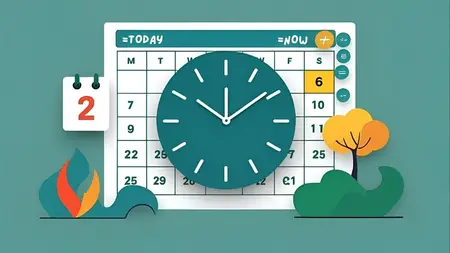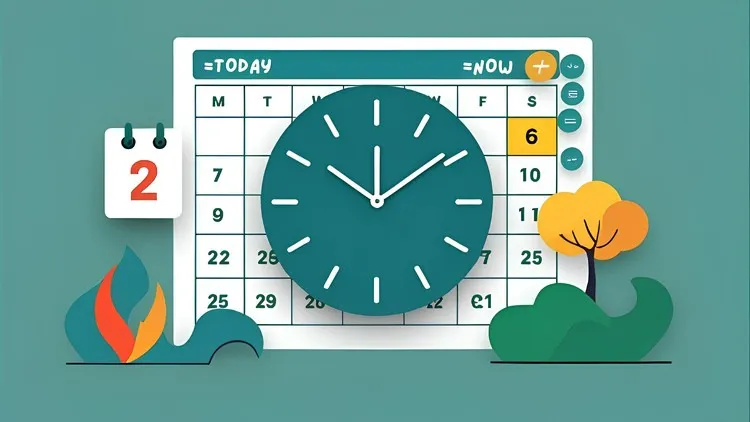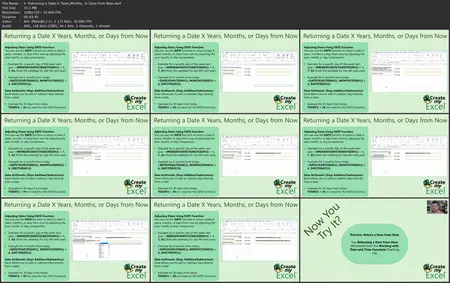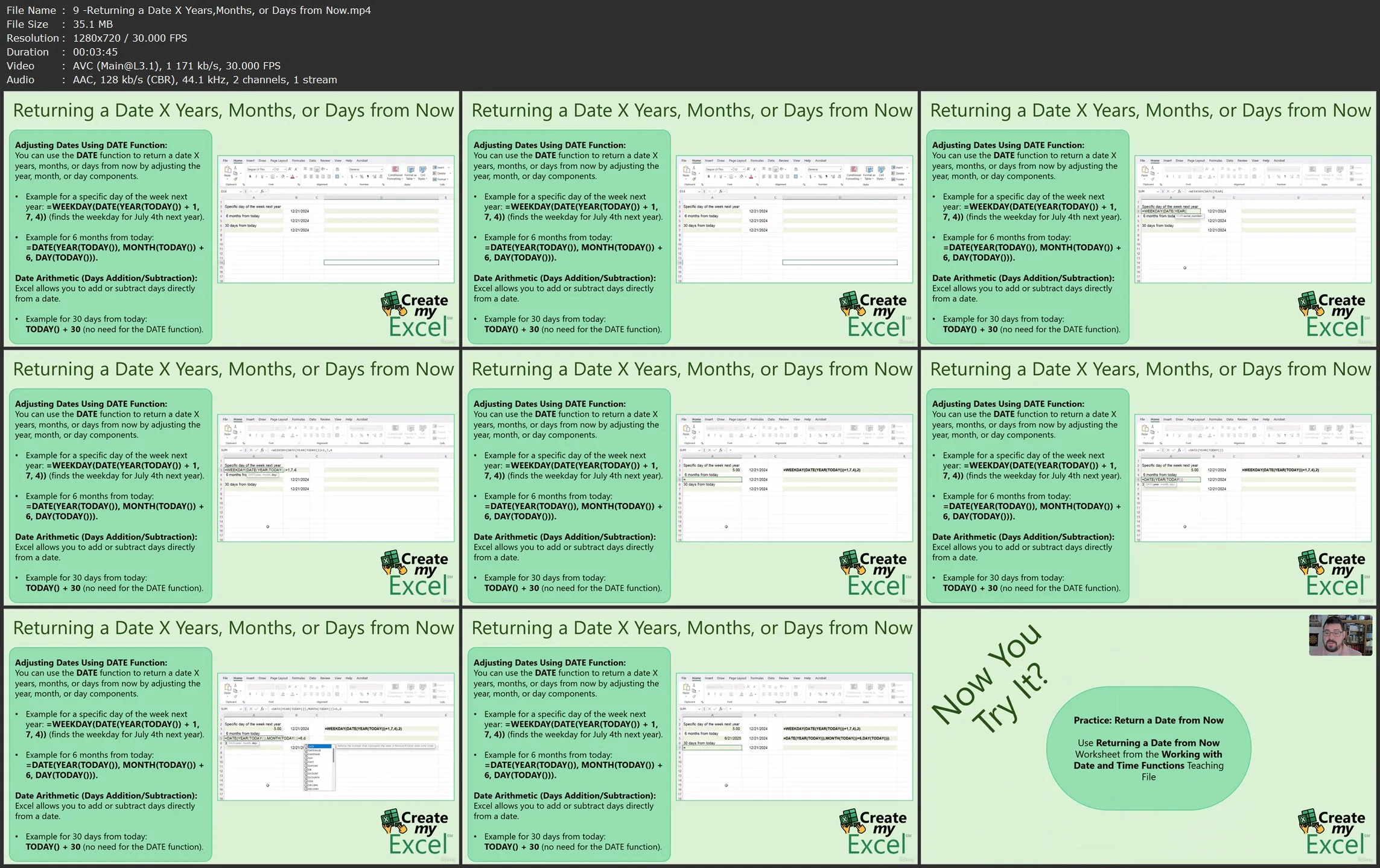Understanding Date and Time Functions in Excel
.MP4, AVC, 1280x720, 30 fps | English, AAC, 2 Ch | 49m | 1.09 GB
Instructor: Ben Scholl
.MP4, AVC, 1280x720, 30 fps | English, AAC, 2 Ch | 49m | 1.09 GB
Instructor: Ben Scholl
Master essential Excel date and time functions for effective data handling.
What you'll learn
- Students will understand how Excel stores and manages dates and times.
- They’ll use TODAY() and NOW() for inserting current dates and times dynamically.
- Learners will extract year, month, day, and weekday components from dates.
- They’ll calculate future or past dates using DATE, EDATE, and WORKDAY functions.
- Students will determine week numbers and nth weekdays within months.
- They’ll calculate working days and exclude weekends and holidays with NETWORKDAYS.
- Learners will use DAYS, DAYS360, and YEARFRAC for date difference and fractional years.
- They’ll convert text to dates using DATEVALUE and format time with TIME functions.
- Students will analyze employee timesheets using time functions and duration calculations.
- They’ll manage complex date and time calculations for project timelines and scheduling.
Requirements
- Microsoft Excel (Office 2021 or Microsoft 365) installed.
- Basic knowledge of Excel (e.g., entering data, simple calculations).
- Access to a computer with a stable internet connection.
- No prior advanced Excel skills required; suitable for beginners.
Description
Working with Date and Time Functions, provides learners with a comprehensive understanding of how Excel handles dates and times and how to effectively use built-in functions to manipulate this data. The chapter starts by explaining Excel’s unique system for storing dates and times, laying a foundation for working confidently with these values.
Students will learn how to insert dynamic current dates and times using functions like TODAY() and NOW(). They will master extracting specific components from dates, such as year, month, day, and weekday, using functions like YEAR(), MONTH(), DAY(), and WEEKDAY(). The course covers calculating future or past dates with functions including DATE, EDATE, and WORKDAY, which help users plan timelines while excluding weekends and holidays.
Learners will also explore week-based functions such as WEEKNUM and calculate specific occurrences of weekdays within a month. Functions like NETWORKDAYS and DAYS360 enable users to calculate working days or durations based on financial standards. The chapter introduces YEARFRAC for calculating fractional years, useful in financial and project analysis.
In addition, students will convert text to date values with DATEVALUE and handle time data using the TIME function and related techniques. Practical examples such as employee timesheets demonstrate how to calculate working hours accurately.
By the end of this chapter, students will be equipped to manage and analyze date and time information efficiently, making it ideal for anyone working on scheduling, reporting, or time-sensitive data using Office 2021 or Microsoft 365.
Who this course is for:
- This course is for Excel users who want to work confidently with dates and times.
- It’s ideal for beginners learning how Excel handles date and time data.
- Professionals managing schedules and deadlines will find it valuable.
- Learners tracking employee hours or timesheets will benefit from this course.
- It’s suited for project managers who need to calculate due dates and timelines.
- This course helps finance professionals calculate interest periods and fiscal dates.
Anyone needing to analyze data involving weekdays, weekends, or holidays will benefit. - It’s great for those automating date-related tasks and calculations.
- Users wanting to convert text to dates or format time properly will find it useful.





